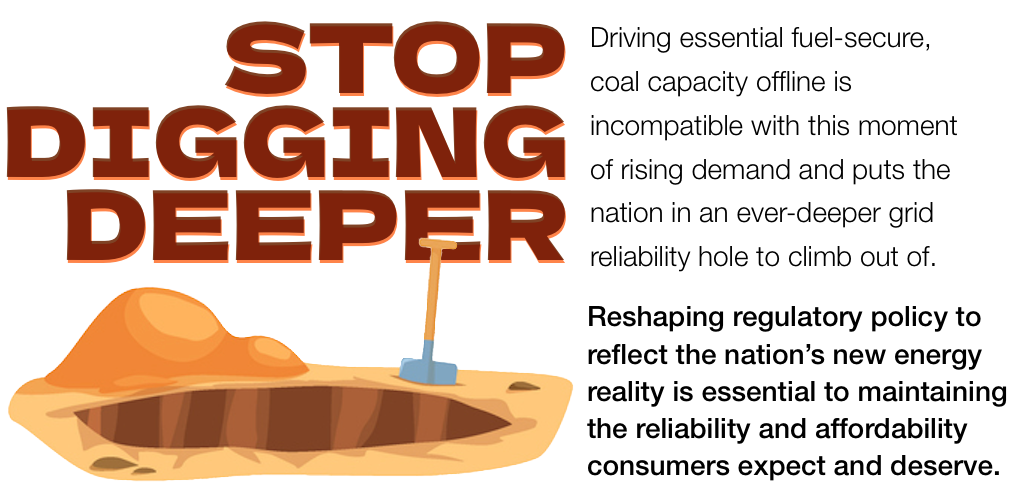
Aligning Energy and Regulatory Policy with the AI Moment
It has become hard to overstate the impact AI and data centers are having on the power sector. This is an industrial revolution on an extraordinary scale.
At a Federal Energy Regulatory Commission (FERC) conference on grid reliability last week, regulators and grid operators once again sounded the alarm over the challenges they collectively face in affordably and reliably meeting the extraordinary demand they know is coming.
“AI is going to change our world,” said Manu Asthana, CEO of the PJM Interconnection, the nation’s largest grid serving 67 million customers. “In our forecast between 2024 and 2030, currently we have a 32-gigawatt increase in demand, of which 30 is from data centers,” he said. That increase is equivalent to adding 20 million new homes to the grid in the next five years.
Lanny Nickell, CEO of the Southwest Power Pool, the grid operator for the Great Plains states, said “we are now projecting our peak demand to be as much as 75 percent higher 10 years from now, and that’s largely driven by electrification and data center growth.”
This surge in demand is colliding with rapidly eroding grid reliability. Across the country, grids are already struggling to meet peak demand and forecasting shortfalls in needed capacity by the end of the decade.
Not even accounting for the latest demand projections, the North American Electric Reliability Corp. (NERC), the nation’s reliability watchdog, warned in December that more than half the nation faces the threat of blackouts over the next decade as demand overwhelms reliable supply. NERC specifically warned that new generating capacity and infrastructure is simply not being built fast enough. That remains truer today than ever.
“Stop Digging the Hole”
Data centers are “an accelerant to almost every sort of resource adequacy issue that we have, and if you combine that pace with the sort of growing schedule to build and complexity in building fossil generation, or thermal generation, dispatchable … we don’t have time to waste,” Adam Keech, PJM vice president of market design and economics, told the FERC conference.
Keech then zeroed in on the critical answer to keeping the lights on and maintaining reliability: “So if we want to keep the resources we have, that’s an option… If we lose the resources we have, the hole gets even deeper to dig out of,” he added.
Secretary of Energy Chris Wright offered the exact same message this spring: “we’ve got to not only grow new production, but we’ve got to stop digging the hole, which means stop shutting down existing, viable, economic plants.”
The dispatchable resources already on the grid are more valuable than ever. Surging capacity prices in PJM and the Midcontinent Independent System Operator (MISO) have confirmed as much.
As Mark Christie, Chairman of FERC recently observed, “One thing we know with no need for further proof: This country, including MISO, is heading for a reliability crisis caused by early retirements of dispatchable resources coupled with the failure to construct sufficient equivalent capacity, all while demand rises at an unprecedented pace largely driven by data center growth.”
Driving essential fuel-secure, coal capacity offline is incompatible with this moment. Reshaping regulatory policy – at both the federal and state levels – to reflect the nation’s new energy reality is essential to threading the needle of enabling the AI revolution and electrification while also maintaining the reliability and affordability consumers expect and deserve.
- On June 11, 2025
